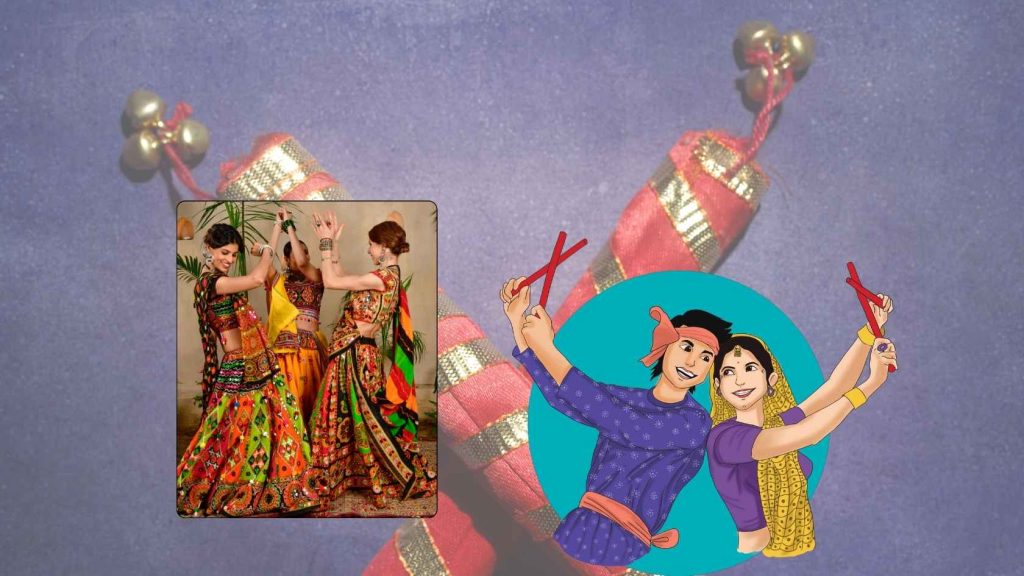Garba and Dandiya are two of the most popular folk dances during Navratri, but many often confuse the two. While they share cultural significance and vibrant energy, there are key differences between Garba and Dandiya. Understanding these differences can help you appreciate the essence of both traditional forms. Let’s explore what makes Garba and Dandiya distinct from each other.
What is the Difference Between Dandiya and Garba?
The main difference between Garba and Dandiya lies in their origin, dance form, and symbolism:
Garba :
Garba is a devotional dance performed before Aarti, symbolizing life and the goddess Durga.
Dandiya :
Dandiya is performed after Aarti, with dancers using sticks to depict a mock fight between Durga and Mahishasura.
Subtle Differences in Performance Style
When comparing the difference between Garba and Dandiya, it’s essential to note that Garba is performed in circular formations with clapping hands, while Dandiya uses sticks, known as dandiyas, which add rhythm to the performance.
Garba vs. Dandiya: Cultural and Symbolic Meaning
- Garba is more traditional and has a strong devotional significance, performed in a continuous circular motion around a central lamp.
- Dandiya, on the other hand, involves pairs of dancers striking sticks together to represent the battle between good and evil.
| Garba | Dandiya |
|---|---|
| Performed in a circle | Performed in pairs |
| Focuses on clapping hands | Involves the use of sticks |
| Celebrates the cycle of life and Durga’s power | Represents the fight between Durga and Mahishasura |
| Devotional dance | More playful and energetic |
Key Characteristics of Dandiya and Garba
- Dandiya in Festivals: Dandiya is an integral part of Navratri celebrations, often performed in groups. Its use of colorful sticks makes it visually appealing.
- Navratri Poses for Couples: When it comes to capturing the essence of both dances, Dandiya Poses for Couples are essential for photoshoots.
- Dandiya Poses for Female: Women also have distinct poses that highlight their attire and dance skills.
FAQ
1. What is the difference between Dandiya and Garba?
- The main difference lies in the form, performance style, and symbolic meaning. Garba is more devotional, while Dandiya is playful.
2. Can Garba and Dandiya be performed together?
- Yes, both are typically performed during Navratri, with Garba preceding Dandiya.
3. Is Dandiya performed only in Navratri?
- Dandiya is most popular during Navratri but can be performed at other cultural events as well.
Conclusion
Understanding the Garba and Dandiya difference allows you to appreciate the cultural richness of Navratri. Whether you prefer the circular motions of Garba or the rhythmic tapping of Dandiya sticks, both dances offer unique experiences. Make sure to try both this Navratri and capture your moments with Dandiya Poses for Couples!

